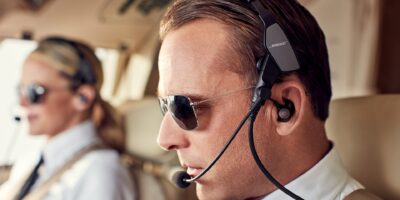Air Show Maneuvers
Air shows captivate audiences with thrilling aerial displays. Life-size jets and nimble propeller aircraft execute gravity-defying maneuvers. Performers master complex routines that blend technique with artistry.
Basics of Aerial Maneuvers
Many maneuvers are fundamental skills taught in flight training. These basic aerobatic moves form the foundation of more complex routines. Understanding these can deepen appreciation for air show performances.
Loops
Loops involve flying in a vertical circle. The pilot pitches the aircraft’s nose up, over the top, and down again to complete the circle. Precision is key to maintaining altitude and completing symmetrical loops.
Rolls
Rolling involves spinning the aircraft around its longitudinal axis. The ailerons control the roll rate and direction. Rolls can be full, half, or quarter, and they can be coordinated with other maneuvers.
Inverted Flight
Flying upside-down, or inverted, is a crowd favorite. Pilots must adjust control inputs to maintain level flight while upside down. This requires skill and familiarity with the aircraft’s behavior.
Intermediate Air Show Maneuvers
Beyond basic moves, pilots combine maneuvers to create complex routines. Intermediate maneuvers often serve as building blocks for advanced routines.
Immelmann Turn
This maneuver combines a half-loop with a half-roll. Starting from level flight, the pilot pulls up into a half-loop, then rolls the aircraft upright at the top. The result is a change in flight direction.
Split-S
The Split-S begins with an inverted half-roll, followed by a descending half-loop. It achieves the same result as the Immelmann Turn but starts from inverted flight and ends in a dive, often used for rapid direction changes.
Hammerhead Turn
The aircraft climbs vertically until near a stall. The pilot applies rudder to yaw the aircraft 180 degrees and descends vertically. This quick pivot showcases the pilot’s coordination and aircraft control.
Advanced Maneuvers
Advanced maneuvers push the limits of aircraft performance and pilot skill. These breathtaking routines require extensive training and precision.
Tail Slide
In a Tail Slide, the aircraft climbs vertically until it runs out of speed and slides backward. The pilot then regains control to continue flying. This move highlights an aircraft’s stability and control at low speeds.
Cuban Eight
The Cuban Eight is a series of connected loops forming a figure eight. Pilots execute a half-loop, then a half-roll to return to upright. They repeat in the opposite direction, showcasing smooth and symmetrical transitions.
Lomcevak
The Lomcevak is an extreme tumble maneuver where the aircraft pivots rapidly in multiple axes. Pilots use this to demonstrate agility and control, often provoking gasps from spectators.
Team Formations and Routines
Air shows often feature team routines, requiring precise coordination among multiple aircraft. Formation flying demands concentration and trust among team members.
Diamond Formation
A classic formation with four aircraft. One leads, two fly at the sides, and one at the rear, creating a diamond shape. Pilots maintain tight spacing and synchrony.
Mirror Pass
Two aircraft fly in mirror image, one inverted above the other. This challenging maneuver showcases precision and control, thrilling audiences with its close proximity flying.
Vertical Break
The formation climbs in unison. At the peak, each aircraft breaks away in different directions. This sudden burst of movement highlights the pilots’ timing and coordination.
Safety in Air Show Maneuvers
Safety is paramount in air shows. Pilots train rigorously to ensure maneuvers are executed flawlessly. Routine aircraft maintenance and safety protocols minimize risks.
Pre-Flight Preparation
Pilots and ground crews perform thorough checks before takeoff. They review weather conditions, aircraft readiness, and flight routines. Every detail is scrutinized to ensure safety.
Training and Certification
Air show pilots must hold special certifications. They undergo extensive training for each maneuver. Continuous practice hones their skills and response times, ensuring they can handle any situation.
Emergency Procedures
Teams prepare for emergencies with drills and contingency plans. Pilots are trained to handle engine failures, abort maneuvers, and manage unexpected situations swiftly and safely.
Role of Technology in Air Shows
Modern technology enhances air show experiences. Advanced avionics, telemetry, and flight data recording improve safety and performance.
Avionics Systems
Avionics provide pilots with real-time data on aircraft performance. Systems monitor engine health, navigation, and flight parameters. These tools aid in executing precise maneuvers.
Telemetry and Flight Data
Telemetry systems transmit data from the aircraft to ground stations. Teams analyze this data to refine performance and detect potential issues. It helps in improving show routines and ensuring safety.
Simulation Training
Simulators allow pilots to practice maneuvers in a controlled environment. They recreate various scenarios, allowing pilots to train for different conditions and emergencies.
Famous Air Show Performers
Notable pilots and teams have made significant contributions to the art of air shows. Their expertise and dedication inspire generations of aviators.
Blue Angels
The U.S. Navy’s Blue Angels are renowned for their precise formations and high-speed maneuvers. Their performances demonstrate teamwork and the capabilities of naval aviation.
Thunderbirds
The U.S. Air Force Thunderbirds showcase advanced jet maneuvers and formation flying. They represent the pinnacle of military aviation skill and discipline.
Pattie Wagstaff
Pattie Wagstaff is a celebrated aerobatic pilot, known for her dynamic solo performances. Her expertise and contributions to aerobatics have earned her numerous accolades.
Impact on Aviation
Air shows contribute to aviation by showcasing innovations and inspiring future pilots. They bridge the gap between military, commercial, and recreational flying.
Technological Advancements
- Display of new aircraft designs
- Introduction of cutting-edge avionics
- Testing of performance limits
Recruitment and Public Engagement
- Inspiring young aviators
- Public outreach and education
- Promoting aviation careers
Community and Economic Benefits
- Boosting local tourism
- Economic opportunities for vendors
- Strengthening community ties
“`
